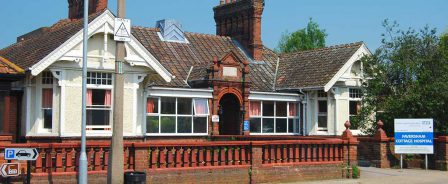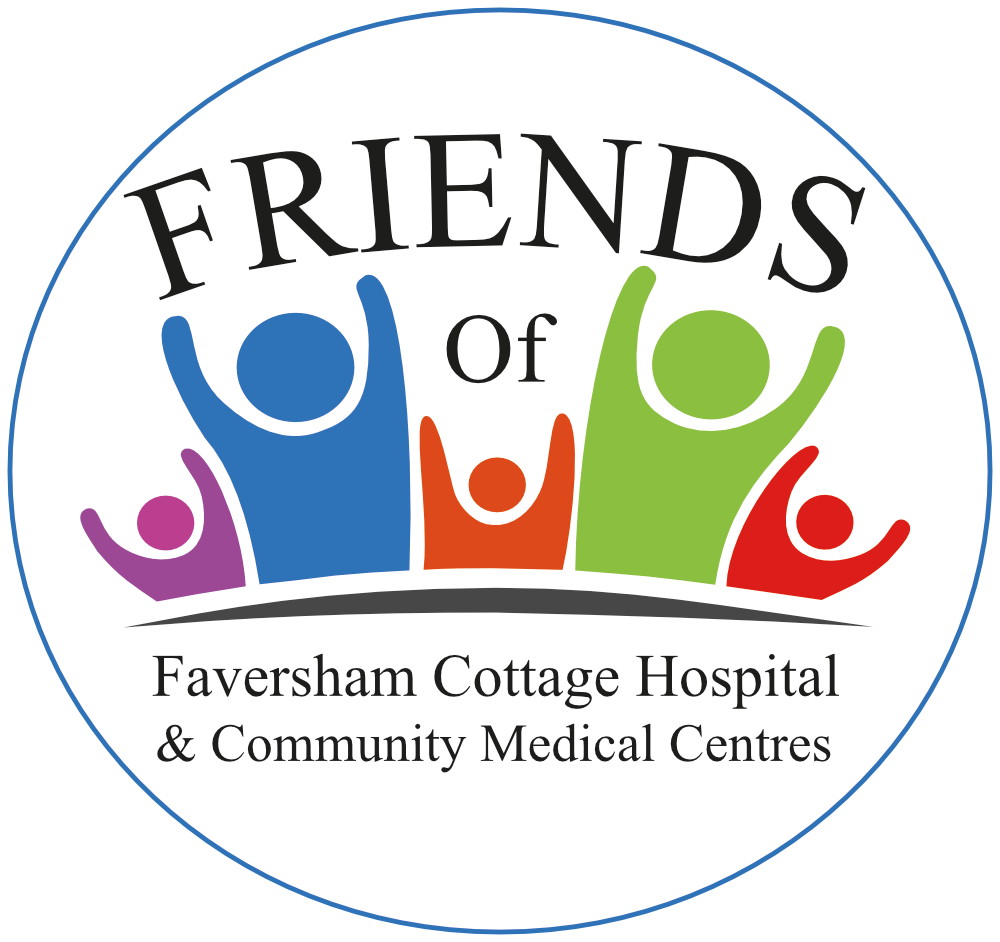A brief history of Faversham Cottage Hospital
Towards the end of the nineteenth century the people of Faversham took several steps to improve the health of the town community, leading eventually to the building of the Cottage Hospital. This movement began with the formation of the Faversham Provident Dispensary, established in 1883 by the local brewer, William Rigden. Its published aim was ‘to provide poor people with the means of using medical officers when ill’. People paid a few pence a week to belong to the scheme and were then entitled to attend the surgery of a doctor of their choice, without charge, and to buy medicines cheaply from the Dispensary’s pharmacy. The scheme was funded by charitable donations from individuals and organisations in the town, such as the Town Council, the Ladies Charity and the Municipal Trustees.

The scheme soon proved to be a success and the people of Faversham felt encouraged to make further improvements to health care in the community.
The most important additional need was for a hospital in the town. Canterbury was a long way to take a seriously ill patient in a horse-drawn ambulance or worse, and there was mounting pressure to build a Cottage Hospital in Faversham. In August 1886 the Mayor, Alderman Goldfinch, called a public meeting to test the level of support for a hospital because all the costs of building and running it would have to be provided by local people. There were many generous offers of help, the most dramatic of which was that from Mrs Townend Hall, the widow of the last member of the Hall family who ran the gunpowder and explosives industry in and around Faversham for almost the whole of the 19th century. She offered to pay the entire cost of building a six- to eight-bed hospital, and other people pledged over £780 at the meeting. The churches of all denominations offered to take up a special collection from their congregations for the Cottage Hospital and a fund-raising Grand Fancy Dress Ball was arranged for New Year’s Eve 1886, to be attended by Earl Sondes, his son Viscount Throwley and Lord Harris.
Everything seemed to be progressing very favourably but there was one big problem. Mrs Hall wanted the hospital built in the open fields of Water Lane, Ospringe, so that patients could benefit from the healing properties of fresh air. Everyone in Faversham itself, including the doctors, wanted it built somewhere near the town centre.
William Rigden came to the rescue. He and his brother offered to give the land bounded by the junction of South Road and Bank Street for the new hospital, with another piece of land for a garden on the opposite side of South Road. Mrs Hall agreed, on condition that the hospital also had a flower garden all round the building. The garden which now runs along the front of the hospital is remaining evidence of Mrs Hall’s enthusiasm for fresh air and gardens as an aid to healing.
A Cottage Hospital Committee was set up to supervise the building of the hospital and William Rigden was appointed Acting Secretary. They were faced with another problem. The land which the Rigden brothers had given for the building of the hospital had had the brick earth excavated from it to a depth of twelve feet. It was usual at that time to build Cottage Hospitals all at one level but to do so on this site would mean that patients would look out onto the brick wall lining the pit. It was decided to build a two-storey hospital with the services such as the kitchen and laundry in the basement and the wards at street level. That is why the public access to the hospital is still over a bridge. There were to be two wards, a five-bed men’s ward to the left of the entrance and a three-bed women’s ward to the right. Office accommodation for the Faversham Provident Dispensary was also provided, but perhaps the most surprising provision was for an operating theatre to be used by the local doctors. The hospital staff was to consist of a nurse, an assistant nurse, a servant (to fetch and carry and serve meals) and a charwoman to clean. The total annual wage bill was £52. 16s.
The building of the hospital proceeded very quickly. Arthur Vernon, formerly land agent to Benjamin Disraeli who had died in 1881, was appointed architect. He immediately produced drawings and specifications, and tenders for the building works were to be submitted by 1 March 1887. Whitings of Ospringe were awarded the contract, Mrs Hall laid the foundation stone in May, and the hospital was opened almost exactly one year later on 26 May 1888.
It was soon realised that more staff were needed and in 1893 a matron, and two additional probationary nurses were appointed, bringing the wage bill to £119. Another surprising innovation before the First World War was the installation of one of the new x-ray machines, first developed in 1903. During the war extensive use of the machine was made by the two military hospitals in the area, which caused a drain on the hospital’s resources. However, the situation which almost overwhelmed the Cottage Hospital was the huge munitions explosion at Uplees in April 1916. 106 men were killed and most of the many injured were brought to the 8-bed Cottage Hospital. It is not surprising that when the war was over it was decided that Faversham’s war memorial should take two forms: a Cross of Remembrance in the garden opposite the hospital and a substantial extension to the hospital itself. The extension, which was opened in November 1922, consisted of a six-bed Western Wing, a new x-ray room and equipment and a new operating theatre. Further small wards were added in 1932 and in 1936 the Nurses’ Home was built on the former hospital vegetable garden where the Bank Street Health Centre now stands.
A survey in 1947, shortly before the setting up of the NHS, showed that, in the previous year, 279 in-patients occupied 3,094 daily bed spaces, 827 minor injuries were treated, and 40 major and 137 minor operations were performed in the hospital.
In more recent years several important additions have been made. In 1989 the 24-bed Kent Wing was opened by the Duke and Duchess of Kent, in 1997 a new physiotherapy suite was created in the basement, and in 2015 a minor injuries unit and x-ray facilities were introduced, thus re-establishing two important functions of the Cottage Hospital from its early years.
Faversham Cottage Hospital was created by Faversham people for Faversham people and the League of Friends is continuing to support this proud tradition of local involvement in the healthcare of the community. We are lucky to be able to benefit from the efforts of our Victorian forefathers and I hope that the Cottage Hospital will go on serving the local community for many years to come.
